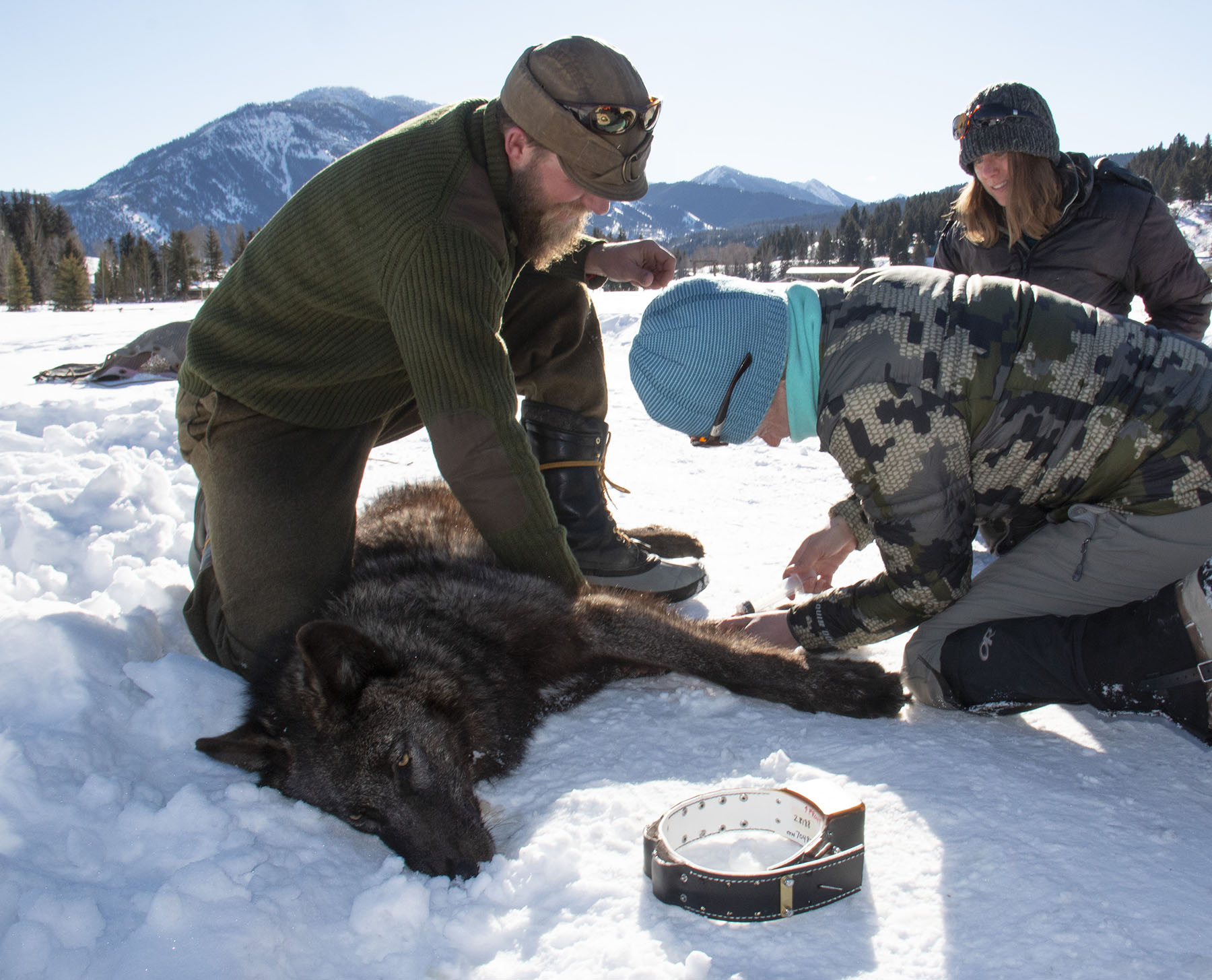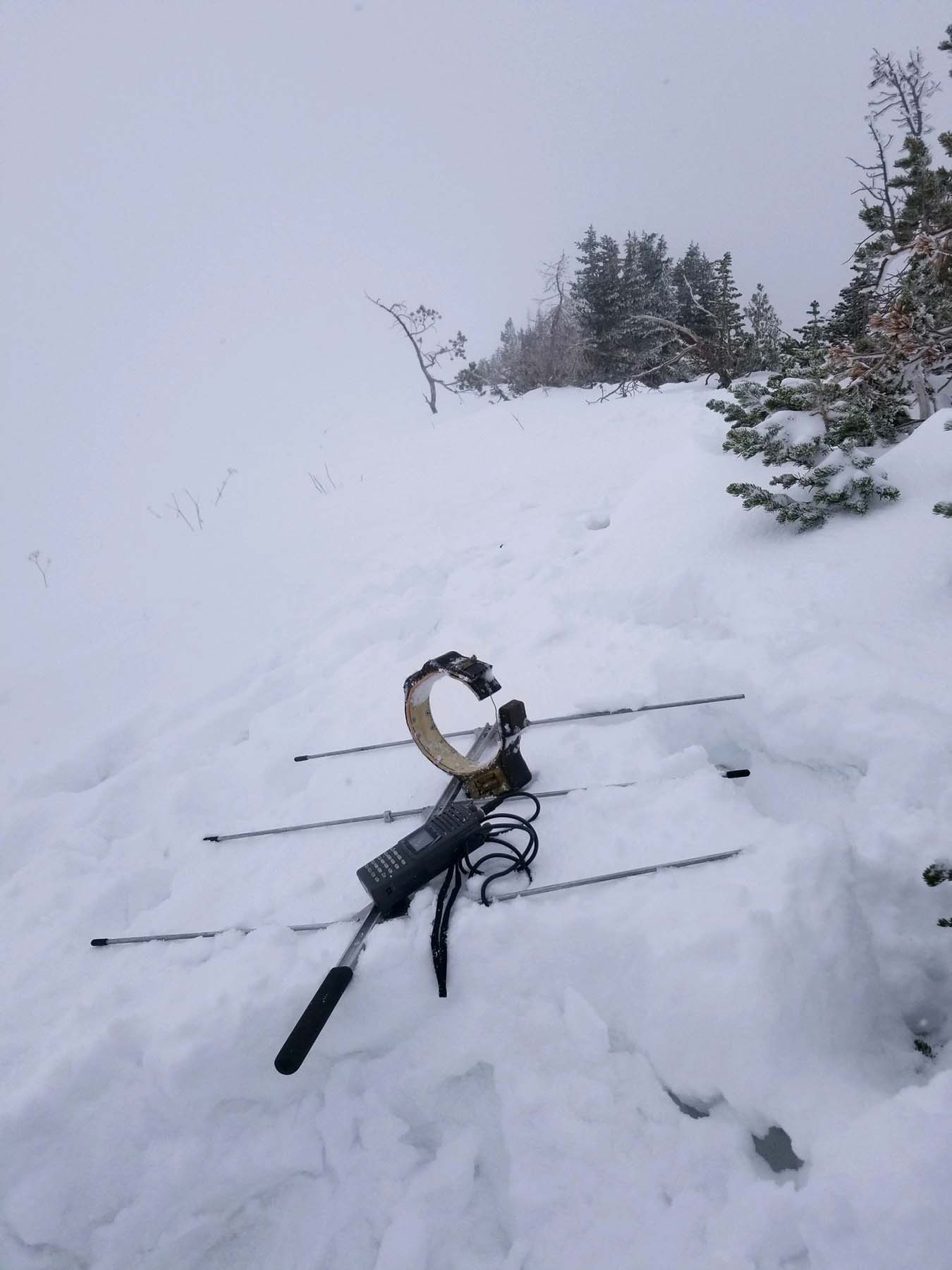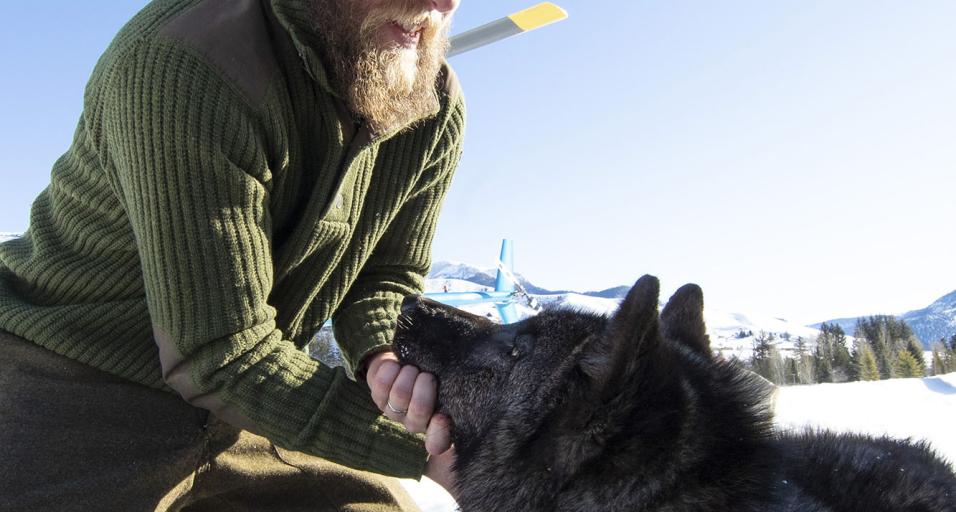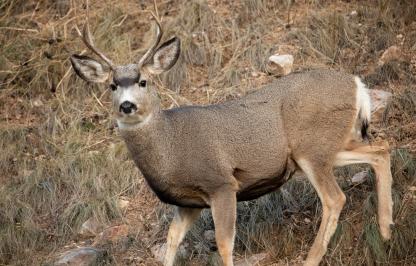Recovering the Data
When Wyoming Game and Fish Wolf Biologist Ken Mills received an e-mail message that a collar on a wolf had been motionless for more than a five-hour period, his mind naturally thought of the possibilities. It usually means one of two things: 1) the animal had died, or 2) the collar had fallen off somehow. Regardless, Mills knew he had to rearrange his schedule to go try to find it, not only to figure out what had happened, but moreso to recover the important movement data it held.

Wyoming Game & Fish Wolf Biologist Ken Mills steadies a young female wolf as Becca Lyon, a Research Assistant with the University California-Berkely, draws a blood sample, prior to collaring the animal near Hoback Junction in January of 2019. In October, Mills received a message that the collar had been motionless for an extended period.
Looking into it further, Mills realized the collar belonged to a yearling female that had been collared on January 28, 2019, as an approximately 10-month old wolf. This animal, along with her parents, made up the Game Creek pack. The trio frequented the drainages of Game, Horse and Granite creeks south of Jackson. This past spring, the mated pair added seven more pups to the pack. Both adult wolves have since died. Wolf populations tend to turn over relatively quickly.
Interestingly, when Mills mapped out the GPS coordinates of the collar’s location, it showed it being high up on Pinnacle Peak in the Gros Ventre Range. In fact, just 400 feet below its 10,813 foot summit. Mills knew then, recovering this collar was going to be an all-day affair, if it was found at all. And he also knew he'd better move quickly before more snow made finding the collar impossible.
On October 18, Mills set out on horseback up Little Horse Creek toward the GPS coordinates provided by the collar.

The view down Little Granite Creek from the south side of Pinnacle Peak, as Game and Fish Wolf Biologist Ken Mills hiked in search of a wolf collar this past October. Photo by Ken Mills
As the trees started getting sparse, Mills tied up his horse and continued on foot. Eventually, as he approached the GPS coordinates, he also listened for the VHF signal. With the "beeps" growing stronger, the signal finally led him to a large snow drift. Digging through the snow for a while, he actually found it. But there was no animal. After examining the collar, he could see the fastening mechanism had failed and the collar had simply fallen off the wolf as it cruised this high country. Dissapointed for the dropped collar, yet grateful to have the data in hand, Mills headed back down country.

The VHF signal from the wolf collar led Game & Fish Wolf Biologist Ken Mills to this snowdrift near the summit of 10,813 foot Pinnacle Peak in the Gros Ventre Range.
While this young female wolf is likely still roaming her territory, mortality is about 30-50 percent of the Wyoming wolf population in any given year. It is estimated that approximately 30 collared animals will go off the air, for one reason or another, each year. Of those, Mills figures he and his colleagues have to go find about 15-20 collars annually. It is not only important to seek out these collars for the data, and to determine cause of death, but the recovered collars are also worth about $1000 toward refurbishment.
So, with such a high mortality rate, the Wyoming Game and Fish will again be trying to deploy upwards of 40 additional collars on Wyoming wolves this winter to help them keep tabs on the population. Ideally, managers would like to have two collared animals in every pack, which adds up to about 70 collared animals total. Work toward this goal will continue through the winter.
Wyoming Game & Fish Wolf Biologist Ken Mills steadies a young female wolf as Becca Lyon, a Research Assistant with the University California-Berkely, draws a blood sample, prior to collaring the animal near Hoback Junction in January of 2019. In October, Mills received a message that the collar had been motionless for an extended period.
Looking into it further, Mills realized the collar belonged to a yearling female that had been collared on January 28, 2019, as an approximately 10-month old wolf. This animal, along with her parents, made up the Game Creek pack. The trio frequented the drainages of Game, Horse and Granite creeks south of Jackson. This past spring, the mated pair added seven more pups to the pack. Both adult wolves have since died. Wolf populations tend to turn over relatively quickly.
Interestingly, when Mills mapped out the GPS coordinates of the collar’s location, it showed it being high up on Pinnacle Peak in the Gros Ventre Range. In fact, just 400 feet below its 10,813 foot summit. Mills knew then, recovering this collar was going to be an all-day affair, if it was found at all. And he also knew he'd better move quickly before more snow made finding the collar impossible.
On October 18, Mills set out on horseback up Little Horse Creek toward the GPS coordinates provided by the collar.
The view down Little Granite Creek from the south side of Pinnacle Peak, as Game and Fish Wolf Biologist Ken Mills hiked in search of a wolf collar this past October. Photo by Ken Mills
As the trees started getting sparse, Mills tied up his horse and continued on foot. Eventually, as he approached the GPS coordinates, he also listened for the VHF signal. With the "beeps" growing stronger, the signal finally led him to a large snow drift. Digging through the snow for a while, he actually found it. But there was no animal. After examining the collar, he could see the fastening mechanism had failed and the collar had simply fallen off the wolf as it cruised this high country. Dissapointed for the dropped collar, yet grateful to have the data in hand, Mills headed back down country.
The VHF signal from the wolf collar led Game & Fish Wolf Biologist Ken Mills to this snowdrift near the summit of 10,813 foot Pinnacle Peak in the Gros Ventre Range.
While this young female wolf is likely still roaming her territory, mortality is about 30-50 percent of the Wyoming wolf population in any given year. It is estimated that approximately 30 collared animals will go off the air, for one reason or another, each year. Of those, Mills figures he and his colleagues have to go find about 15-20 collars annually. It is not only important to seek out these collars for the data, and to determine cause of death, but the recovered collars are also worth about $1000 toward refurbishment.
So, with such a high mortality rate, the Wyoming Game and Fish will again be trying to deploy upwards of 40 additional collars on Wyoming wolves this winter to help them keep tabs on the population. Ideally, managers would like to have two collared animals in every pack, which adds up to about 70 collared animals total. Work toward this goal will continue through the winter.
Mark Gocke, Public Information Specialist, 307-249-5811




